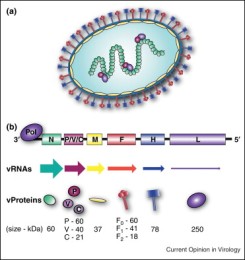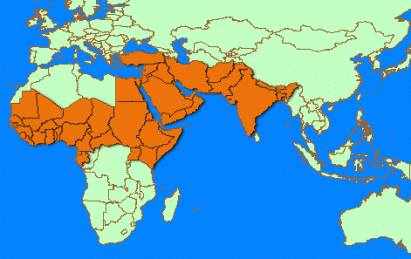In response to The Daily Post’s writing prompt: “(Your Thing) for Dummies.”
I found the most favorite daily prompt on the least free day! I am quite sick, fever it is, and MUST rest now. But when I saw the prompt, I tried to do something… I can’t write much, so thought to share any video for my friends on “My Thing” “Biology”. And where rest? there’s tons of videos on PCR, Cell Biology, Cell structure, DNA replication, Protein synthesis etc etc etc..I started watching and knew a lot! Ha ha ! How many will I share?
Then found this video, on Ebola Virus, may be most media focused after Swine flu and HIV, or may be more than them! But is Ebola THAT important? This video will definitely answer that, and for that, PLEASE watch the video till end 😀
There is also a take home message from the sick teacher of today’s class. That is: “If YOU ALL want to stay out of deadly diseases, just stay in the NATURE’S LAW. Don’t make tree’s, animal’s, virus’s, bacteria’s lives hell; they would definitely make yours!”
Enjoy the class 🙂
Tag: biology
Metagenomic virus detection in clinical specimens : a new era

As seen in this Chinese doll picture, the organisms in our nature is not only they look like, they live in an intermingling fashion, which calls for the whole study of them , or the Metagenomics. With the advancement of newer sequencing methods, the area of metagenomics has largely expanded, or on the other way, the broad-range studies of microorganisms in genetic level has geared up the newer and newer inventions of high-throughput sequencing systems. Okay, what it is, Metagenomics is a beautiful study, nothings less important here.
But when we come to the world of viruses, they are not the main ones in the environmental pool. Sure they are present there, but the main sphere of viruses are living cells as they only live well in intracellular condition. In many cases, viruses enter in a body, replicate here, fight with each other or live in peace, spread infections, and when they are shed, from the host body, they are not the same, they have mutated and changed by this time. This made the theory of Quasispecies. So, the environmental study of metagenomics can not be applied here.
Another matter is the studies of Zoonosis. Everyday, there is a new evidence coming out, about, this or that newly emerged disease has come from this or that animals. When a case is found, with no former case, its very difficult to find out the causative agent. So, the specific and effective study of Metagenomics from clinical sample is very important.
This study comes forward with a very new method, tissue-based unbiased virus detection for viral metagenomics (TUViD-VM). Formerly there were many methods available for viral metagenomic study as Hybridization, Sequence independent single primer amplification( SISPA), Arbitrary primed PCR (AP-PCR), Rolling circle amplification etc. This study group from Robert Koch Institute, Germany, not only established a new protocol, but also have shown the efficacy very well.
Schematic description of tissue-based universal virus detection for viral metagenomics protocol. Estimated durations of each step are shown in parentheses. The protocol takes 12 h to complete
This study compared the protocol in different virus groups, different hosts, different extraction, PCR and sequencing methods. The only limitation of this study might be the higher cost for sample processing. It also need high capacity computational analyses as both the viral and host genomes are mixed in a clinical sample gene pool. The researchers nullified the constrain, as sequence data for mammalian hosts are very limited.
This study opened a new era of viral study. Where a newly emerged disease call for an outbreak, and we find nothing in our hands to search the causative agent, as we saw for Ebola just a few days earlier, an established protocol of tissue based viral metagenomics can help a lot!
Links : http://wwwnc.cdc.gov/eid/article/21/1/14-0766_article
http://onlinelibrary.wiley.com/doi/10.1002/rmv.532/abstract
also posted at : http://www.sciencenutshell.com/metagenomic-virus-detection-clinical-specimens-new-era/
Animal Virus 1: Peste Des Petits Ruminants Virus (PPRV)
Dear all, you may find a lot of things at internet about these viruses, but I am feeling at home discussing them, reminding myself the stuffs ..Lets start my Viro blogs with my MS thesis topic, PPRV, which is an animal virus of small animals like goat, sheep, deer and others. It is not associated with big ruminants like cow, buffalo etc. It may not be that concern for rich countries, but a great threat for poorer ones, as they largely depend on domestic farming…Okay, Lets start 🙂
Viral diseases of farm animals are now appearing with regularity in areas where they have never been seen before. PPRV is currently considered as one of the main animal transboundary diseases that constitutes a threat to livestock production in many developing countries, particularly in western Africa and South Asia. It has been seen in both domestic and wild animals.
The origin of the word “Peste des petits ruminants” is French, meaning “Plague of small ruminants”. It is also known as pseudorinderpest, goat plague, Kata, pneumoenteritis complex, Pest of Small Ruminants, Pest of Sheep and Goats, Stomatitis-Pneumoenteritis Syndrome, goat catarrhal fever etc.
The disease is caused by an RNA virus, Peste des Petits Ruminants virus (PPRV), in the genus Morbillivirus of Paramyxoviridae family. PPRV is antigenically closely related to rinderpest virus (RPV). Other members of the Morbillivirus genus are human measles virus (MV), canine distemper virus (CDV), phocine distemper virus (PDV), dolphin Morbillivirus (DMV) and porpoise Morbillivirus (PMV).


It is a highly contagious and economically important viral disease of sheep and goats characterized by pyrexia, mucopurulent nasal and ocular discharges, necrotizing and erosive stomatitis, enteritis and pneumonia with very high morbidity . Mortality rate from infection is 10% to 90% depending on age and breed of sheep and goats which can be as high as 100% .
Infection predominantly spreads via the close contact of the diseased animals which have high fever in the flock with vulnerable animals. The oral, nasal and conjunctival secretions and feces of the infected animals contain a great number of viruses.
The disease was first reported in West Africa during 1942 and later found in Senegal, Central Africa, Sudan, India, East Africa, Arabia, Middle East, Ethiopia, Bangladesh, Pakistan, Nepal, Israel and Saudi Arabia. The disease is now enzootic, which means “native to”, or “prevalent in” several African and Asian countries. In 1996, outbreaks of PPRV occurred in the European part of Turkey, and the relevance of these once considered ‘exotic’ viruses is now also high across the European Union and may threaten further regions across the globe in the future.
Antibiotics are not very much effective here, and vaccines are not very much available in poorer countries, mutations in virus is another obstacle. But its close relative virus, Rinderpest is already eradicated from earth (sarcastically which may have helped PPRV reach to more regions and more hosts! ) International organizations for animal heath are working collectively with locals to eradicate it.
Links:
http://www.oie.int/animal-health-in-the-world/official-disease-status/peste-des-petits-ruminants/
